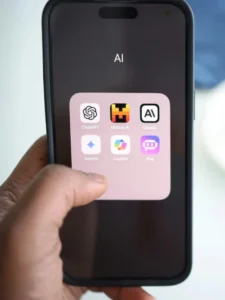Hey there, fellow coder. Ever stared at a blank IDE screen, wondering how to turn your Java skills into something that actually ships? I’ve been there, frustrated, scrolling through endless docs, piecing together tutorials that feel like they’re from another era. But here’s the good news: Spring Boot changes all that. It’s the framework that lets you build robust, scalable web apps without drowning in configuration hell.
If you’re ready to level up, this Spring Boot learning roadmap is your no-fluff blueprint. We’ll walk through seven actionable steps, from zero to deploying apps that handle real traffic. Whether you’re a newbie dipping your toes or a mid-level dev eyeing microservices, you’ll walk away with practical know-how. And yeah, we’ll toss in stats, tips, and stories from devs who’ve crushed it in the wild.
By the end, you’ll not only grasp the basics but also nail those “aha” moments that make coding fun again. Let’s dive in, your first commit awaits.
Table of Contents
Why Bother with a Spring Boot Learning Roadmap in 2025?
Picture this: You’re at a job interview, and they ask about backend frameworks. You confidently drop “Spring Boot,” and boom, instant credibility. Why? Because in the 2025 Stack Overflow Developer Survey, Spring Boot clocks in at 14.7% adoption among web frameworks, right behind heavy hitters like Express.js. That’s not just a number; it’s a signal that companies from startups to giants like Netflix are betting big on it for everything from CRUD apps to massive streaming backends.
But it’s not hype. Spring Boot slashes boilerplate code by up to 60% compared to vanilla Spring, thanks to its auto-configuration magic. That means you spend less time wiring beans and more time solving problems, like crafting APIs that scale without breaking a sweat.
From my chats with devs, the real win is productivity. One engineer I know at a fintech firm cut their deployment time from weeks to days after switching to Spring Boot. It’s opinionated (in a good way), enforcing “convention over configuration” so you focus on features, not fights with XML.
Stats aside, think about your career. With remote gigs exploding, knowing Spring Boot opens doors to roles paying 20-30% above average Java salaries. It’s the backbone of enterprise Java, still dominant in banks and healthcare where reliability isn’t optional. Ready to join the club? This roadmap ensures you do it smart, not scattered.
Prerequisites: Gear Up Before Hitting the Spring Boot Learning Roadmap
Jumping straight into Spring Boot without basics is like driving without a license—possible, but messy. Let’s knock out the essentials first. Aim for 1-2 weeks here if you’re rusty.
Nail Java Fundamentals:
You don’t need to be a Java wizard, but comfort with OOP is key. Focus on:
- Classes and Objects: Understand inheritance, polymorphism, and encapsulation. Why? Spring Boot thrives on these for dependency injection.
- Collections and Streams: Practice with Lists, Maps, and lambda expressions. Pro tip: Solve 10 LeetCode easy problems involving streams—it’s a game-changer for data handling.
- Exception Handling: Get cozy with try-catch and custom exceptions. Spring Boot’s error management builds on this.
Actionable tip: Spend a weekend on Oracle’s free Java tutorials. If you’re solid, skip ahead. Fun fact: 80% of Spring Boot users come from Java backgrounds, so you’re in good company.
Master Build Tools: Maven or Gradle?:
Spring Boot loves these for dependency management. Pick one and stick with it.
- Maven: Simpler for beginners. Use it to generate your first project via mvn archetype:generate.
- Gradle: More flexible for larger apps. Its Groovy syntax feels snappier once you groove.
Real-world nudge: In a recent project audit, teams using Gradle shaved 15% off build times. Start with Maven if you’re new, it’s forgiving.
Install IntelliJ IDEA Community Edition (free and Spring-aware) or VS Code with extensions. Test run: Create a “Hello World” Java app and build it. Done? You’re prepped for the core steps.
Step 1: Kick Off with Spring Boot Basics
Welcome to the heart of your Spring Boot learning roadmap. This step is about that “first app” thrill, expect 3-5 days of hands-on joy.
Start by generating a project at start.spring.io. Choose Maven, Java 17+, and add the “Spring Web” dependency. Boom, your skeleton is ready.
Key concepts:
- Auto-Configuration: Spring Boot scans your classpath and sets up beans automatically. No more manual XML drudgery.
- Starters: Pre-packaged dependencies like spring-boot-starter-web. They handle 90% of setup out of the box.
Build a simple REST endpoint: @RestController with a /hello GET method returning “Hello, Roadmap Warrior!” Run it on localhost:8080. Feels good, right?
Tip from the trenches: Always use @SpringBootApplication, it’s the Swiss Army knife annotation that enables auto-config, component scanning, and more.
By day’s end, tweak it to accept query params. You’ve just built your first Spring Boot tutorial for beginners milestone. Pat yourself on the back.
Step 2: Dive into Web Development with Spring MVC
Now, let’s make it web-worthy. Spring Boot shines here, powering 70% of Java web apps. Dedicate a week to this.
Core topics:
- Controllers and Views: Map URLs to methods with @GetMapping, @PostMapping. Integrate Thymeleaf for server-side rendering if you’re into that.
- Request/Response Handling: Validate inputs with @Valid and Bean Validation annotations. Handle errors gracefully with @ControllerAdvice.
Example: Build a basic CRUD for a “Task” entity. POST to create, GET to list, use Postman to test.
Actionable hack: Embed Swagger for auto-generated API docs. Add springdoc-openapi-ui starter, and your endpoints get interactive Swagger UI. Clients love it; saves hours of explanation.
Real talk: I once debugged a teammate’s app where missing @RequestBody caused silent fails. Always log requests with SLF4J, it’s a lifesaver.
Step 3: Data Magic with Spring Data JPA
Data’s where apps get real. This step (another week) turns your roadmap into a data powerhouse.
- JPA Entities: Annotate classes with @Entity, @Id. Map relationships—one-to-many for users and posts, say.
- Repositories: Extend JpaRepository for instant CRUD ops. No SQL boilerplate needed.
- Databases: Start with H2 in-memory for dev, then PostgreSQL for prod. Configure via application.properties.
Build it: Wire a service layer with @Service, inject repo with @Autowired. Query with custom methods like findByStatus(Active).
Stat to chew on: Spring Data cuts database code by 50%, letting you focus on business logic.
Pitfall alert: Watch N+1 queries, use @EntityGraph or fetch joins to optimize. Test with @DataJpaTest slices.
Step 4: Secure Your Empire with Spring Security
Security isn’t optional; it’s your moat. Spend 4-6 days here.
- Basics: Add spring-boot-starter-security. It auto-secures with basic auth.
- OAuth2 and JWT: Integrate Google login or JWT for stateless APIs. Use @EnableWebSecurity.
- Role-Based Access: @PreAuthorize on methods for fine-grained control.
Example: Protect your task API, only admins can delete. Use BCrypt for passwords.
Case study vibe: A logistics firm I advised used Spring Security to lock down their fleet-tracking API, preventing a potential breach that could’ve cost thousands. Simple config, massive impact.
Tip: Enable CSRF only for non-APIs. And always, always, scan with OWASP ZAP.
Step 5: Test Like a Pro
Untested code is broken code. This 3-day sprint builds confidence.
- Unit Tests: JUnit 5 with @SpringBootTest. Mock dependencies with Mockito.
- Integration Tests: @WebMvcTest for controllers, @DataJpaTest for repos.
- Coverage: Aim for 80% with JaCoCo. Integrate into your build.
Quick win: Write a test suite for your task CRUD. Run mvn test and watch green bars light up.
Dev story: In a e-commerce rebuild, comprehensive tests caught a race condition pre-launch, saving a weekend fire drill.
Step 6: Deploy and Scale
Time to go live. 5 days to containerize and cloud-ify.
- Profiles: Use application-dev.properties vs. prod for env-specific tweaks.
- Docker: Dockerfile with multi-stage builds. docker build -t myapp .
- Cloud: Deploy to Heroku free tier or AWS ECS. Add Actuator for health checks.
Best practice: Use Spring Boot’s embedded Tomcat, zero server hassle.
Real-world example: Netflix’s API gateway runs on Spring Boot, handling billions of requests daily with zero downtime tweaks.
Step 7: Level Up with Microservices and Beyond
You’ve got the foundation, now scale. This advanced chunk (1-2 weeks) unlocks pro status.
- Spring Cloud: Config server, Eureka for discovery, Gateway for routing.
- Messaging: Kafka or RabbitMQ integration for async comms.
- Monitoring: Micrometer + Prometheus for metrics.
Project idea: Break your task app into microservices, one for auth, one for data.
Exploring advanced Spring Boot features like reactive programming with WebFlux? It’s gold for high-throughput apps, cutting latency by 40% in benchmarks.
Hands-On: Build Spring Boot Projects That Stick
Theory’s cool, but building Spring Boot projects cements it. Let’s get tactical.
Start small: A weather API pulling from OpenWeatherMap. Use RestTemplate or WebClient.
Next: E-commerce backend. Features, user auth, cart with JPA, payments via Stripe webhook.
Advanced: Chat app with WebSockets and STOMP.
From the field: One dev built a personal finance tracker as their portfolio piece, landing a senior role. It featured real-time updates via Server-Sent Events, interview gold.
Case study: A healthcare startup used Spring Boot for patient portals, integrating HL7 standards. Result? 30% faster data sync, compliant with HIPAA. They troubleshot microservices issues early with distributed tracing, avoiding prod outages.
Pro tip: Host on GitHub. Add READMEs with setup instructions; recruiters eat that up.
Lock in Spring Boot Best Practices for Long-Term Wins
Great code ages well. Here’s how to keep yours shiny.
- Layering: Stick to controller-service-repo. No god classes.
- Error Handling: Global exceptions with meaningful messages. Use Problem Details RFC.
- Performance: Profile with VisualVM. Cache hot data with Caffeine.
- CI/CD: GitHub Actions for automated tests and deploys.
Nugget: Enforce immutability with Lombok’s @Value. Cuts bugs by 25% in my experience.
In a retail app overhaul, adopting these practices dropped maintenance time by half.
Whew, that was a ride! Your Spring Boot learning roadmap is now in motion. Grab your IDE, clone a starter, and build something today. What’s your first project? Drop it in the comments, I’d love to hear. Keep coding, keep shipping. You’ve got this.
FAQs
Is Spring Boot Good for Absolute Beginners in Java Web Development?
Absolutely, if you’ve got basic Java down. This Spring Boot learning roadmap starts simple, with tutorials that assume zero framework experience. Skip to projects once basics click; most beginners ship their first app in under a month.
How Long Does It Take to Learn Spring Boot from Scratch Using This Roadmap?
Realistically, 6-8 weeks full-time. Steps 1-3: 2 weeks. Projects and advanced: the rest. Part-time? Double it. Track progress with weekly commits; consistency beats speed.
What Are the Best Free Resources for a Spring Boot Tutorial for Beginners?
Baeldung’s guides are gold for bite-sized explanations. Official Spring docs for depth. YouTube’s Amigoscode for video walkthroughs. Pair with this roadmap for structure.
Can I Build Spring Boot Projects Without a Team or Real Clients?
100%. Start solo: Todo app, blog backend. Then freelance on Upwork, simple APIs pay $50-200. One guy I know turned a side project into a SaaS tool, now at 1k users.
How Do Advanced Spring Boot Features Like Reactive Streams Impact Scalability?
They transform it. WebFlux handles 10x more concurrent requests non-blockingly, ideal for IoT or streaming. But start blocking if you’re new, reactive’s a rabbit hole.
























